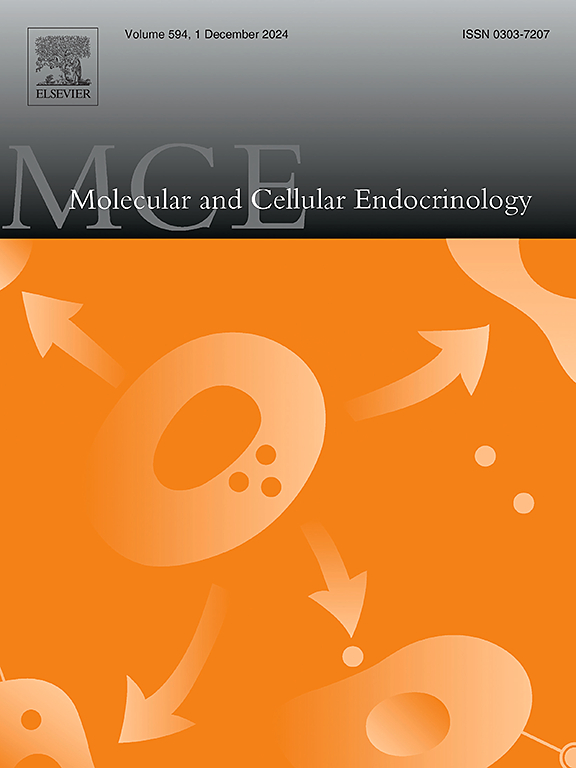The importance of thiamine availability in the thermogenic competency of human adipocytes
IF 3.8
3区 医学
Q2 CELL BIOLOGY
引用次数: 0
Abstract
Brown and beige adipocytes express uncoupling protein 1 (UCP1), which is located in the inner mitochondrial membrane and facilitates the dissipation of excess energy as heat. The activation of thermogenic adipocytes is a potential therapeutic target for treating type 2 diabetes mellitus, obesity, and related co-morbidities. Therefore, identifying novel approaches to stimulate the function of these adipocytes is crucial for advancing therapeutic strategies. Currently, there are limited amount of human adipocyte cell line models available to study the regulatory mechanisms of browning and key players in thermogenesis. The Simpson-Golabi-Behmel syndrome (SGBS) preadipocyte cell line has been proven as a valuable model to investigate human adipocyte biology. In this study, we investigated how excess thiamine (vitamin B1), and the inhibition of thiamine transporters affect the expression of thermogenic markers and functional parameters during adrenergic stimulation in SGBS adipocytes. We found that limiting thiamine availability by pharmacological inhibitors impeded the dibutyryl-cAMP (db-cAMP)-dependent induction of thiamine transporter 1 and 2 (encoded by SLC19A2 and SLC19A3), UCP1, PGC1a, and other browning markers, as well as proton leak respiration which is associated with UCP1-dependent heat generation. Contrarily, excess thiamine enhanced the db-cAMP-dependent induction of thiamine transporters, while UCP1, PGC1a, and other browning markers were upregulated. In addition, abundant amounts of thiamine increased the basal, unstimulated coupled and uncoupled respiration, and the expression of mitochondrial complex subunits. Our study highlights the critical role of excess thiamine in the thermogenic activation of SGBS adipocytes and its potential to enhance thermogenesis.
硫胺素在人体脂肪细胞产热能力中的重要性。
棕色和米色脂肪细胞表达解偶联蛋白1 (uncoupling protein-1, UCP1), UCP1位于线粒体内膜内,促进多余能量以热量的形式散失。热源性脂肪细胞的激活是治疗2型糖尿病、肥胖和相关合并症的潜在治疗靶点。因此,寻找刺激这些脂肪细胞功能的新方法对于推进治疗策略至关重要。目前,用于研究褐变调控机制和产热关键因子的人脂肪细胞系模型有限。simpsongolabi - behmel综合征(SGBS)前脂肪细胞系已被证明是研究人类脂肪细胞生物学的一个有价值的模型。在这项研究中,我们研究了过量的硫胺素(维生素B1)和硫胺素转运体的抑制如何影响肾上腺素能刺激下SGBS脂肪细胞的产热标志物和功能参数的表达。我们发现,通过药物抑制剂限制硫胺素的可用性,会阻碍二丁基camp (bb - camp)依赖的硫胺素转运蛋白1和2(由SLC19A2和SLC19A3编码)、UCP1、PGC1a和其他褐变标志物的诱导,以及与UCP1依赖的产热相关的质子泄漏呼吸。相反,过量的硫胺素增强了db- camp依赖性的硫胺素转运蛋白的诱导,而UCP1、PGC1a和其他褐变标志物则上调。此外,大量的硫胺素增加了基础呼吸、非刺激偶联呼吸和非偶联呼吸,以及线粒体复合物亚基的表达。我们的研究强调了过量硫胺素在SGBS脂肪细胞的产热激活中的关键作用及其增强产热的潜力。
本文章由计算机程序翻译,如有差异,请以英文原文为准。
求助全文
约1分钟内获得全文
求助全文
来源期刊

Molecular and Cellular Endocrinology
医学-内分泌学与代谢
CiteScore
9.00
自引率
2.40%
发文量
174
审稿时长
42 days
期刊介绍:
Molecular and Cellular Endocrinology was established in 1974 to meet the demand for integrated publication on all aspects related to the genetic and biochemical effects, synthesis and secretions of extracellular signals (hormones, neurotransmitters, etc.) and to the understanding of cellular regulatory mechanisms involved in hormonal control.
 求助内容:
求助内容: 应助结果提醒方式:
应助结果提醒方式:


